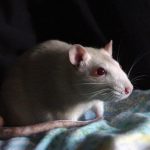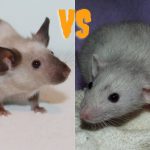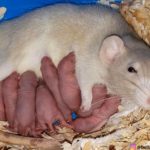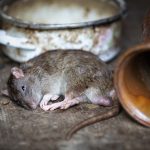Types of Pet Rats
Rats are becoming ever increasingly popular animals to keep as pets. Easy to care for, friendly and inquisitive rats are a great pet for adults and children alike. But when it comes to deciding which species of rat to get the choices can be overwhelming. So to help out we’ve compiled a list of the different domesticated rat species to help make the decision a little easier.
Types of rat species vs variety
It’s important to understand the difference between rat species and varieties. All fancy rat species are called Rattus Norvegicus which is also knows as the “Brown Rat”. Their tails are roughly as long as their body and they have blunt noses, small eyes and small ears that have hair on the back. Whereas in the wild they all have the same body type, same coat and same colour.
Due to genetic mutation and selective breeding, there is now a variety of the same species of Rattus Norvegicus. This means there is now a variety of rats with a range of different colours, coat textures and ear positions. So when talking about fancy rat varieties, this is what it means. They are all one species but they all look different.
The different varieties of rats can refer to curly or smooth coats, ear positioning or their fur colour. The different varieties of rats you may come across are Rex (fur type), Dumbo (ear positioning), Black (colour) or Hooded (markings).
Standard
The standard rat has a short coat with straight hairs and ears that sit on the top of their head. The coat has a smooth appearance with the males having slightly longer hair than the females that may feel rougher. The males tend to have a greasier coat due to hormones causing bucks to produce buck grease (orange grease from their skin). Their whiskers are long and straight.
Males that are looked after with proper care and a good diet can develop a softer coat.
Hairless (Sphynx)
Hairless rats have completely no hair except for spots of fur around their whiskers that can be curly and small. Their skin colour depends on the genes they have. Hairless rats that are pale will be pink and ones with dark colours will display black or grey areas on their skin. When owning a hairless rat there are some health concerns to watch out for. Since hairless rats have no fur to help keep them warm, they burn more calories trying to stay warm, resulting in them being smaller than the average rat size.
Tailless (Manx)
As the name suggests tailless rats are a species of rat with no tail. This is caused by a genetic mutation which is due to a defect. Their body shape may be stockier and smaller than other rat varieties. Their back also looks rounder than other rats since there’s no tail there. Rats without tails may have difficulties managing themselves as rats tails are important for helping them balance.
Rex
Rex rats tend to have crinkly and curly fur and curled up whiskers. They are soft to touch but as they get older, their fur tends to get thinner and may even get bald patches. You can also get double rexes which is when rats have two copies of the rex gene and they have fur that is tightly curled and sparse and sometimes may look hairless from afar. They also have curled up eyelashes and sometimes may have eye problems due to having curly or absent eyelashes.
Satin
Satin rats have a satiny fur that is very soft to touch. Their fur is longer than a rexes fur and looks shiny.
Dumbo
Dumbo rats ears are rounder and positioned on the side of their head. The only difference between a Dumbo rat and other rats is where their ears sit. They can be any colour with any type of coat.
Dwarf
Everything about dwarf rats are the same as every other rat except their size. Dwarf rats are smaller than the average rat size (approximately 1/3 of the size).
Marked
Marked rats have areas in their coat which is white. There is a huge variety of different markings that you can get. The most common are:
Berkshire: White stomach, often with a tip of white on the tail. If the markings spread up onto the sides, they are called over- markings.
Irish: White on the chest, normally a triangle shape.
Hooded: Mostly white with colour on their head, shoulders and a stripe going down the back. If the stripe is broken up, this is called mismarked.
Capped: Colour only on the head.
Blazed: A blaze or wedge shaped marking on the forehead which is coloured white.
Roan: Overtime the colouring of the coat moults out to a paler colour, eventually going white.
Black-eyed white: Extreme white markings with dark eyes. With the extreme markings comes health problems. Black-eyes whites are known to be prone to deafness and epilepsy.
Popular Colours
There is a wide range of colour possibilities since all rat varieties can come in any colour. Coloured rats are divided into two categories; non-agouti and agouti-based rats. Agouti is known to be the natural colour of rats which is typically brown with colour made by banded hairs in grey, black, orange and brown. The colour in rats is from the dominant gene. Some rats have an absence of this gene, making them non-agouti. Non-agouti rats have a solid coloured coat. Below are some of the common coat colours:
Black: The coat is mostly all black with some hairs being white.
Albino: White body with pink eyes. Albino rats are also known to have poor eyesight.
Blue: There are two types of blue rat; Russian blue and slate blue. Blue rats generally have genes which are a bluish silver, some being very light, while others are dark genes. Blue agouti rats are a silver, grey or blue with a silver stomach and blue guard hairs.
Mink: Rats with a mink dilute (known as cinnamon) are lighter and have a reddish brown coat. A black rat with a mink dilute brightens the black making the colour turn more into a brown. The brown can be anywhere from grey to a chocolate colour.
Red eyed dilute: Selected diluted genes will affect the colour of the rats eyes and the colour of the coat. Red eyed dilute are a light colour with an even lighter coloured stomach.
When choosing a rat species for you as a pet it is important to remember each have their traits and flaws, we recommend reading more on each type you are interested in to come to an educated choice on what’s right for you.








